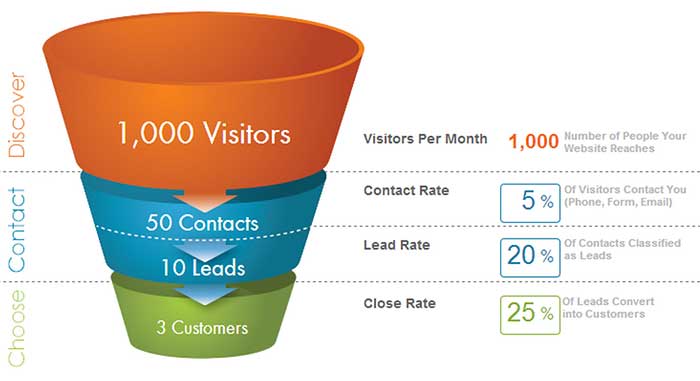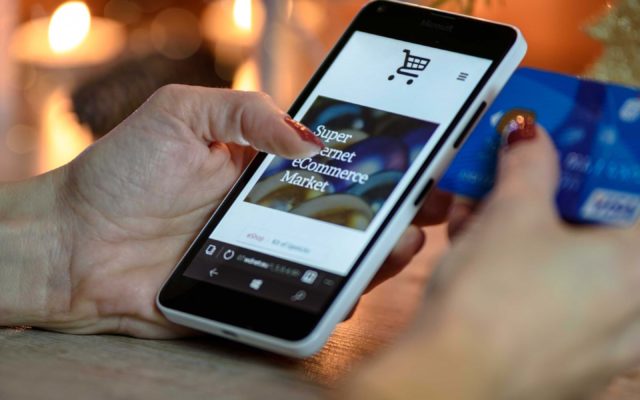If you really care about your website conversion rate optimization, you would read this article in its entirety – the information presented here is priceless, yet free.
What Is Conversion?
Conversion, in general, is the process of one thing turning into another thing.
If applied to websites, conversion is when a visitor takes any desired action on a web page.
More specifically, conversion is the process of turning a regular visitor into a registered user, paid customer, subscriber etc.
What Is Conversion Rate?
As defined by Wikipedia, the conversion rate is the proportion of website visitors who take an action to go beyond a casual content view or website visit, as a result of subtle or direct requests from marketers, advertisers, and content creators.
The formula of the conversion rate is pretty obvious – it’s a ratio of “converted” user to the total number of users.

What Is Conversion Rate Optimization for a Website?
Conversion rate optimization (CRO) is the process of increasing conversion on a website using various techniques. We will talk more about these techniques in just a few moments.
Conversion rate optimization is…
- based on the systematic and structured approach
- driven by the analytics and user data
- a part of your overall marketing strategy
- about getting the most out of what you have!
Conversion rate optimization is not…
- based on taking guesses and copying from others
- always about common sense – people are irrational
- a science – it’s more of an art!
I’ve got a great article on conversion rate optimization basics, and it’s right here on this website – “Conversion Rate Optimization: Where to Start and How to Succeed.”
Key Terms You Should Know
These are the words I will be using a lot in this article so you might want to familiarize yourself with their meaning.
Conversion Funnel

Conversion funnel (or simply funnel) is a general path that a user should follow to complete the conversion. For example, on my website it would probably be something like this:
Google search => Article page => Newsletter subscription form.
These are the steps that your visitors have to through to become your customers. There is always some friction and each step typically has fewer users than the previous one. In my case, it may be 1,000 => 100 => 10.
Keep in mind that conversion has an additional dimension, which is time. You should build and analyze the conversion funnels only for the comparable amount of time.
Landing Page
Landing page is the front page of your website – it’s the page users “land on,” when they click on a link in search results.
Landing page should contain everything your future customers need to know about your product or service: description, features, and pricing. Optionally, it could have customer reviews or testimonials, videos, demos and other information you deem valuable.
Call-To-Action
Call-to-action (CTA) is an instruction to the audience of your website to provoke an immediate response, usually featuring an imperative verb like “sign up,” “call now,” or “start your free trial.”
Everything you should know about calls-to-action is here in this article called “15 Tips How to Create a Call To Action That Will Double Your CTR”.
Value Proposition
Value proposition is the concentrated message you want to deliver to your potential clients, usually a short line of text. It’s about the core value they will get by using your product (service) if they become your customers.
For example, “unlock your real potential with the product X,” or “get bigger and stronger with the service Y,” or even “get laid more with my special set of techniques.” 🙂
A/B Testing

A/B testing (also called split-testing) is the process testing two or more versions of an interface element against each other to see which performs better in terms of conversion rate. For example, green button vs. red button.
With A/B testing, you can test only one element at a time.
Multivariate Testing
As you may have probably guessed, multivariate testing allows you to test multiple interface elements or their combinations against each other at a time.
For example, you could test different combinations of CTA, pictures, and copy to see which combination performs best.
12 Creative Tips for Effective Website Conversion Rate Optimization
Now that you know enough, it’s time to get to the main subject of the article – the actual tips that you can use.
1. Get Rid of Unnecessary Form Fields
What, do you really need to know your customer’s middle name and his favorite horror movie? I don’t think so.
The fewer fields you have on your registration form, the easier it would be for people to fill it in.
Fewer fields = more users = better conversion.
Makes sense?
2. Make Your CTA Button BRIGHT and VISIBLE
Of course, you’ve heard the stories about the green-colored button having better conversion than the red-colored button and so on.
But the truth is that it’s not about the color. A great-performing button should look contrasting to the rest of the page elements.
3. Never use generic stock photos

Nothing is more fake than these larger-than-life images of smiling beauties and well-built men.
If you want to build trust and earn genuine interest in your product, use real-life photos or even put a picture of yourself upfront. Use something that regular people can easily relate to.
4. Employ Value-Oriented CTAs
Whenever on a web page, everyone knows that they should “Sign up” or “Subscribe” to something. However, very rarely we tell them why, and that a pity because “why” is the most important question here.
Give people an idea of what they might get if they complete the action. Instead of “Sign up,” try using “Sign up to get a free sample,” or even better – “Sign up to become an expert.”
5. Place All the Important Information Above the Fold
Remember – not everyone would want to scroll your three pages of description in order to find a “Buy now” button. If your CTA is below the fold right now, you’re losing customers badly.
Make people’s life easier – always place your CTA and value proposition above the fold.
6. Add a Video
Reading stuff is one thing but watching is a whole different level. Videos are known to convert people better than any pictures and smart copy combined.
Watch an Apple video if you’re still a skeptic.
7. Create a Sense of Urgency
If there’s urgency, there must be a deficit. And if there’s a deficit, there’s got to be something valuable there for me – that’s what a typical customer inner logic looks like.
This scene explains this thought better than anything else (warning – strong language).
8. No CTA Text Links
Go ahead and inspect your website right now. Are there any CTAs disguised as text links? If so, please do me a favor – change them immediately into buttons, nice and big.
Don’t ask “why,” just do it – you will thank me later.
9. Use Magic Words
Believe it or not, there are words that, if used properly in the context, can increase your website conversion rate dramatically (and “dramatically” happens to be one of them 😉 ).
Words like “your,” “new,” “best,” “amazing,” “increase,” “grow” have a magical power on the customers but the most powerful word yet is “free.” Make sure you drop it once or twice on your landing page.
Here’s a list of such words.
11. Add Testimonials. Real Testimonials
There are enough of fake testimonials already all over the Internet so don’t make it worse. Find some real customer feedback and add it to your landing page. If you manage to get an appraisal video from your fan, it’s done – you’re the boss.
12. Employ Live Chat
Live chat may seem like a gimmick to some but it’s there and it’s showing amazing results for many online businesses.
What can be better than the ability to talk to chat with your potential customer in person and provide him or her all the necessary information about the product/service?
Just remember to act naturally so that people won’t confuse you with a chatbot.
Conclusion
In this article, you’ve learned some common terminology and tips on conversion rate optimization.
The right thing to do would be share this article with your friends on the social networks – just click on one of the icons of social media, it’s that easy.
If you have further questions on the subject, please write them in comments – I’ll be glad to answer.
Move on to the next articles – it’s going to give you a lot more than that.





Comments0